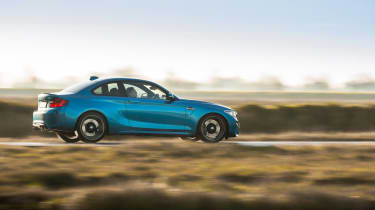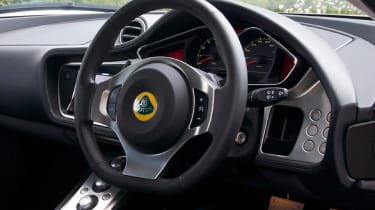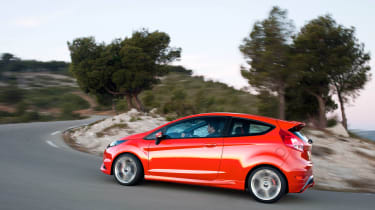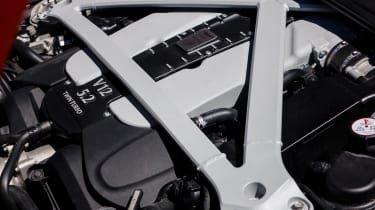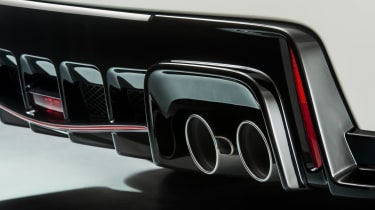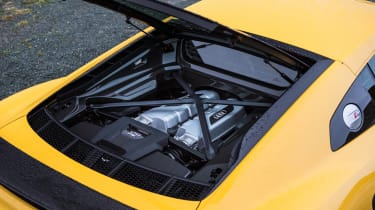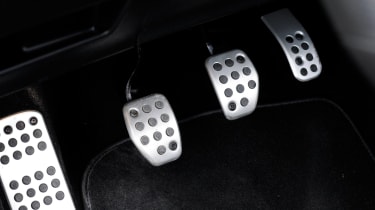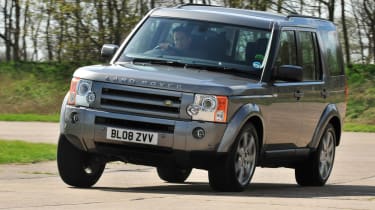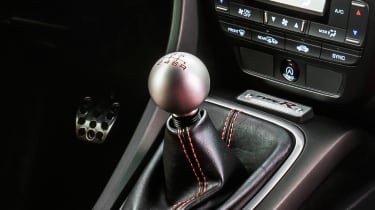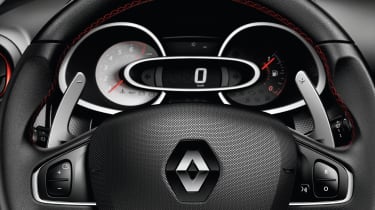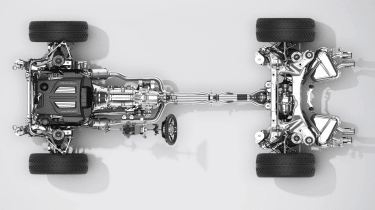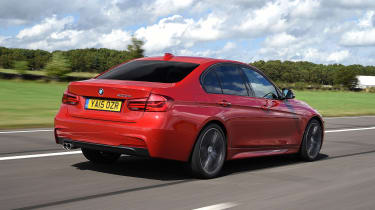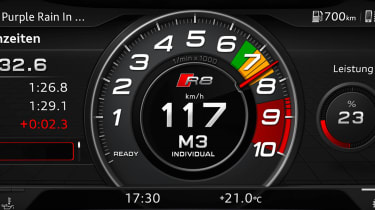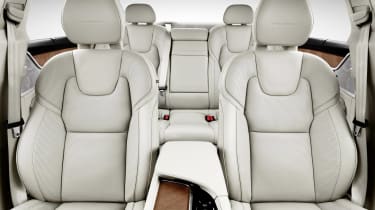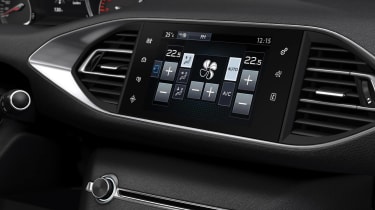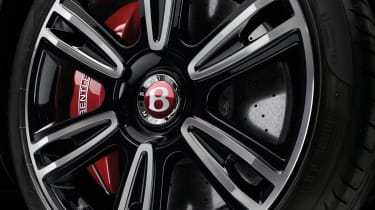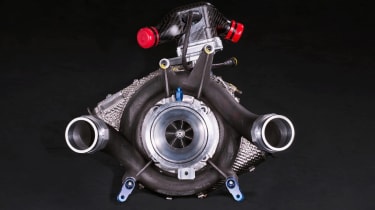What makes a car good to drive?
Car reviews often make reference to a car being ‘good’ or ‘enjoyable’ to drive, but what does this actually mean?
Anyone who’s ever researched a car prior to purchase is likely to have come across the phrase ‘car X is enjoyable to drive’, but there are too many occasions when what this means isn’t fully explained, often due to space limitations. This makes pinning down what makes a car enjoyable to drive – itself an inexact science – difficult for buyers.
Considering many of us decide to buy a car after just a short test drive, knowing what to look out for when reading reviews and test-driving cars is vital. This article breaks down the various aspects that make a car enjoyable to drive, or ‘handle’ well.
We’ll cover the obvious things like performance, power and general handling characteristics, but it’s worth noting that if you’re after a relaxed driving experience, you’ll probably find a sporty car requiring continual steering inputs far from ‘enjoyable’. For this reason, we’ll also look at the subjective nature of driving pleasure, weighing up expectations and requirements versus reality.
At Carbuyer, we always strive to use non-specialist language – so much so we’re approved by the Plain English Campaign – but if you’ve come across any unfamiliar words or phrases in a review elsewhere, scroll down for a helpful handling jargon-buster.
If you want a ‘sporty’ or ‘involving’ driving experience:
Many drivers like the idea of a car that’ll be thrilling to hustle down a winding A or B-road and, if you read a review that says a car is enjoyable to drive, it’s usually these environments being talked about – although the sophisticated nature of contemporary car design means this doesn’t necessarily come at the expense of motorway comfort or cruising capability.
Even if the review doesn’t make explicit reference to them, if you read or hear that a car is enjoyable to drive, you can reasonably expect the following areas are being referred to:
Steering: reviews will often talk about steering ‘feel’, steering ‘accuracy’ and steering ‘weight’. Steering weight is relatively easy to explain. Although the vast majority of today’s cars use power assistance to make steering easy, if the weight of a car’s steering is considered too light – meaning the wheel requires too little effort to turn – this can make the car unenjoyable to drive. The main reason for this is that overly light steering feels artificial and the effort required when cornering can bear more resemblance to stirring a cup of tea than steering the front wheels of a heavy car. Overly heavy steering, on the other hand, can just make a car a chore to drive, although this is less of a common problem in most cars.
Steering feel is harder to explain, partly because it’s more subjective. In essence, many keen and experienced drivers are able to tell a lot from the way the steering wheel feels in their hands. Different types of road surface (tarmac or concrete, for example) and wet-weather driving conditions cause subtle variations in minute vibrations coming through the steering wheel, as well as affecting the weight and progressiveness with which it turns in your hands.
Equally importantly, during cornering a car’s front wheels experience differing levels of grip and – in a front-wheel-drive car – can transmit varying amounts of power to the road, depending on how much purchase each has. These factors can also be sensed via subtle tactile variations, transmitted from the car’s wheels through the steering wheel and to the driver’s hands.
A steering setup with plenty of ‘feel’ will transmit lots of tactile information to the driver’s hands, allowing them to gauge how much grip the front wheels have and how much power they can or can’t safety deploy. Carmakers have recently started moving away from hydraulically actuated power steering to electric setups, as the latter doesn’t require constant pressurisation from a pump, so fuel economy improves as a result. While electric power steering is generally thought to lessen the amount of steering feel on offer (and non-power-assisted steering provides even more feel), this is becoming less true with the newest systems.
Steering accuracy is innately related to steering weight and feel, but essentially concerns how easy the car is to place when cornering. Steering accuracy dictates how much confidence and intuition the driver has about the effect their inputs at the steering wheel will have on what the car’s front wheels – and the car itself – will do.
If you find yourself in an understeer or oversteer situation (see the jargon-buster below) it’s much easier to ‘correct’ a driving error with an accurate steering setup, as you’ll have a better idea of how the car will behave. If you’ve ever driven a classic car, you may be familiar with finding the car hard to place on the road, and little happening to the car’s steering when slight wheel inputs are made. This would be an example of inaccurate steering, or too much ‘play’ in the wheel.
If you’ve never experienced these aspects of steering, try consciously feeling for differences the next time you take a corner, or drive in slippery conditions. As any musician will tell you, human hands are incredibly sensitive to subtle pressures, movements and vibrations. You may be surprised at how much information can come through the steering wheel – depending on the car you’re driving, of course.
Engine power, ‘responsiveness’, noise and cylinders: if that all sounds a bit waffly, engines are reassuringly objective and mechanical.
If a car doesn’t have enough power, it can simply feel too slow. That’s not to say we all conduct ourselves like racing drivers on the road, but if you’re in an underpowered car it can be tiresome to drive up a steep hill, join a motorway or carry lots of passengers or luggage.
Cars that are otherwise enjoyable to drive can also be hamstrung by not having a powerful enough engine. The MG3 is a good example of this: its steering makes it fun to hustle along a winding backroad, but the overwhelming sense is that it’d be a lot more enjoyable with a little more oomph. Power is measured (in the UK) in bhp, or brake horsepower; our dedicated guide to horsepower has more information.
Engine responsiveness concerns how the engine reacts when you put your foot down. Is there a delay before the car speeds up? If so, this would be an example of an unresponsive engine. Similarly, when you take your foot off the accelerator, do the engine revs fall quickly or slowly? The latter indicates an unresponsive engine.
Engine responsiveness used to be almost incompatible with turbocharging, as these clever bits of kit took a second or two to ‘spool up’ before they could add their extra dose of power to proceedings. Modern turbochargers (which allow manufacturers to fit smaller, more efficient but still powerful engines) are far less guilty of being unresponsive, although some drivers still prefer a non-turbo engine. Our guide to turbochargers tells you all you need to know about these increasingly common components.
A car’s engine noise (which also manifests itself in the ‘exhaust note’) can hold a lot of appeal for keen motorists – driving is a multi-sensory experience, after all. We’ve all heard attention-grabbing cars on the road, and some sound better than others. A car with a loud engine or exhaust note can be great fun at times, but annoying on long journeys; some performance cars have a switch that varies how loud the exhaust note is to mitigate against this. Enjoyable engine noise, like music, is rather subjective. Some like the eager sound of a tiny engine or the rumble of a far larger engine, while others prefer as little sound as possible.
Cylinders are located deep inside the engine and are where fuel is burned. As a rule of thumb, the more cylinders a car’s engine has, the better – in terms of performance, if not economy. While two and three-cylinder engines can be found in some small cars (like the Fiat 500, for example) most cars use four-cylinder engines. Six-cylinder engines are known for being very smooth when accelerating, while eight-cylinder engines (which are often arranged in a ‘V’ formation, with four cylinders on each side of the V – this is called a V8) produce large amounts of power, along with a great noise. Finally, 10 and 12-cylinder engines tend to be the preserve of supercars and other expensive high-performance models; both are often arranged in a ‘V’ formation, too.
Weight: half the battle when developing a car’s handling is managing its weight, and how fast a car accelerates is intrinsically linked to how much it weighs. A two-tonne car with a 300bhp engine will be significantly slower than a car with similar power that’s half the weight, for example. This is sometimes described as a car’s power-to-weight ratio (see the glossary below).
During acceleration, braking and cornering, a car’s weight shifts about significantly. A good suspension system will help mange these changes, but having a car with perfect 50:50 weight distribution (meaning there’s as much mass over the rear wheels as the front) is seen as ideal. A car that’s significantly heavier at one end than the other can be prone to unpredictable handling. Mid-engined cars (where the engine sits between the rear wheels and the car’s interior) help make 50:50 weight distribution easier to achieve.
Pedal ‘feel’: it’s not just your hands that are able to feel small variations in pressure and stimulus: your feet – while not quite as sensitive as your hands – can still tell you more than you might think; just ask anyone who’s ever stepped on a piece of Lego. Some cars have an accelerator that’s either too sensitive or not sensitive enough, making it hard to judge what the engine will do when you press it a certain amount. This can be tied to how much ‘travel’ the accelerator has – how far it moves up and down.
Similarly, cars that have a lot of ‘feel’ in their brake pedal allow for more effective control when stopping. Just as your hands can determine grip levels through the steering wheel, so can your feet provide information about how close a car is to losing grip during heavy braking. It’s also easier to vary how hard you’re braking in a car with plenty of brake pedal, as you can ease off or apply more pressure mid-braking depending on requirements; cars that are well configured in this regard will respond accurately and predictably to your foot’s input.
It goes without saying that overall braking effectiveness is an important factor here, and this is an area where cars have markedly improved in the last decade or two, partly thanks to anti-lock brakes (often called ABS) and Electronic Stability Programme (ESP).
Suspension: in a car that’s considered good to drive, the suspension must like Goldilocks’ bed – neither too hard nor too soft. As a rule of thumb, the softer a car’s suspension, the worse it will corner, as the car will lean or roll about on the vertical plane as its weight shifts. This discourages spirited driving partly as you and any passengers will move about in your seats. Conversely, if a manufacturer has fitted very stiff suspension, the car may corner brilliantly with no body lean, but be incredibly uncomfortable over potholes, drain covers and the like. The best-handling cars manage to corner nice and ‘flat’ – meaning the car doesn’t wobble about – but are also good at absorbing poor road surfaces, minimising the number and severity of bumps, clunks and judders you experience.
Gearchanges: this might sound strange to some people, but keen drivers enjoy changing gear – provided the gearbox is good. In cars with manual gearboxes, the gearchange should be smooth and accurate. This means it’s easy to pick the right gear, so you won’t select second when you want fourth. Good manual gearboxes are sometimes described as having a ‘positive’ action. This means you’ll easily know when the lever has selected a gear and it engages in a decisive manner – rather than requiring an extra push, just to be sure. The line between a ‘positive’ manual gearbox and a notchy one is – as you might expect – fine.
A good automatic gearbox will change gear without driver input smoothly, quickly and with no jerking; it should also allow the driver to change gear themselves should they wish, ideally using steering-wheel-mounted paddles. When in manual mode, an automatic should change gear faster than a comparable manual gearbox, without any undue lurching or hesitation. We’ve put together a guide to gearboxes if you’d like to know more.
Driven wheels: cars can be configured in three key ways: front-wheel drive (FWD) rear-wheel drive (RWD) and four-wheel drive (AWD, 4WD or 4x4). Front-wheel-drive cars are cheaper to build and easier to package – meaning the car can offer more passenger space. Rear-wheel drive is generally preferred by keen drivers, as the steering feel isn’t corrupted by having to deal with transmitting power to the road.
Four-wheel-drive cars have good grip, although this tends to come at the expense of handling compared to rear-wheel-drive cars. It’s also worth noting that many four-wheel-drive cars actually operate in two-wheel-drive mode until such time as grip is lost, when four-wheel-drive mode is triggered. Such systems can vary the amount of power sent to the front and rear wheels, and some can send power from one side to the other, helping to boost grip and stability when cornering. Our detailed article on this subject has more information.
If you want a ‘comfortable’ or ‘relaxing’ driving experience:
Some people couldn’t give two hoots about how a car ‘handles’ according to the criteria already discussed, and just want a comfortable car that’s easy to drive. Given the congested nature of Britain’s roads and the fact the average motorist spends about 360 hours (or 15 solid days) a year in their car, that’s easy to understand.
It’s worth pointing out that some cars are relaxing to drive when you want them to be, yet thrilling when the mood takes you. This is a delicate balancing act, but one some cars (like the BMW 3 Series) manage with aplomb.
We’ll talk about similar aspects to the ones covered above, but if you want a car that offers a relaxed driving experience or read a review that makes reference to the car being ‘smooth’ or ‘relaxing’ to drive, it’s safe to assume the writer is talking about:
Suspension: if you’re not interested in cornering quickly in what’s sometimes described as a ‘spirited’ manner, you won’t be too concerned about the car remaining flat when going around a bend – how effective the car is at absorbing lumps an bumps in the tarmac will be far more important. It’s fair to say, though, that a car with bad suspension may be soft – i.e. it wobbles about when cornering – but will be poor at absorbing bumps, too. It’s also fair to say that a car with a comfortable suspension setup won’t draw attention to itself – it’ll be so proficient and providing on-road comfort you won’t notice its efficacy.
Power: again, a comfortable car should have sufficient power so as not to require you to overly rev the engine or change gear frequently when you want to make progress. This contributes to the relaxing nature of the driving experience partly because cars are loud when they rev, and loud noises tend not to be calming. Speaking of noises…
Noise: in addition to having a quiet engine, people looking for a relaxing car will also want to avoid undue wind or tyre noise intruding inside. Wind noise tends to manifest itself as a whistling or whooshing sound and is caused by poor aerodynamics – the way air moves over the car as it travels. A high roofline, steeply ‘raked’ (meaning it’s closer to vertical than horizontal) windscreen and large wing mirrors can contribute significantly to wind noise.
Tyre noise can vary depending on how good the suspension is at acting as an aural buffer between the tarmac and your ears. Tyre noise also tends to be exacerbated by large wheels and tyres, and is most noticeable when travelling on dual-carriageways and motorways, where the tyres can make an unpleasant droning sound. The tyres you use have a huge impact on this, so when you’re replacing them look for the noise ratings on the tyre’s label.
Wind noise and tyre noise can be minimised by sound-deadening material (essentially aural insulation) to a certain extent. Because sound-deadening material is hidden in out-of-sight areas, it’s something manufacturers can skimp on to save money when building budget-friendly cars – although you’ll notice its absence in the long run.
Feeling ‘planted’ on the road: a Porsche 718 Cayman driver may be pleased at the lightness of their car, and marvel at the way it seems to almost ‘dance’ across the road according to their inputs; this is undesirable in a relaxed car. Relaxed cars should feel heavy and secure on the road, and undisturbed in their course by wind buffeting or poor surfaces. Although a relaxed car should feel heavy on the road, that doesn’t mean it’s hard to drive – merely that it won’t change direction if you so much as glance at the steering wheel.
Other aspects that can affect how enjoyable a car is to drive include:
Seat comfort and support: self-explanatory, really: if you can’t get comfortable or the seats don’t hold you supportively, you’re unlikely to enjoy the driving experience as much as you otherwise might – particularly if you’re on a long journey.
Visibility: again, a fairly obvious one, but if the car is hard to see out of – at junctions or when changing lanes on the motorway, for example – this can lessen your confidence behind the wheel, and affect how much you enjoy driving the car.
Good ergonomics and easy-to-use controls: a car with poor ergonomics or an uncomfortable driving position can be a pain to drive. One example of this is if the pedals are ‘offset’, meaning your legs aren’t pointing straight ahead when they’re in the perfect position to reach the pedals. This is sometimes an issue in cars that were originally designed in left-hand-drive configuration for foreign markets, before the manufacturing process was adapted to build right-hand-drive examples.
Badly laid-out controls can also have a disproportionately significant effect on how easy a car is to drive. Some modern cars allow you to fine-tune the suspension and steering, and many require you to use a touchscreen if you want to do this. Cars sometimes also require you to use a touchscreen if you want to change the air-conditioning settings. Depending on how good the system is, this either works well or can be distracting (and potentially dangerous), as you’re forced to take your attention away from the road if you get too hot or cold, or want to change the driving mode.
Handling jargon buster:
0-62mph: the standard measure of a car’s acceleration. In the UK, this used to be measured from 0-60mph, but as 62mph is the same as 100kph, manufacturers have taken to using 0-62mph in order to keep things universal across Europe and further afield. In reality, 0-62mph times aren’t the best yardstick for gauging how fast a car is, as many cars – especially diesels – have a slow 0-62mph time, but are impressively brisk when going from 30-50mph or 50-70mph – a speed increase drivers require more frequently than the 0-62mph sprint.
Brake fade: if you read a review that talks about the brakes fading, this means they become less effective after repeated heavy use. Brake fade is normally caused by the brakes getting too hot, and it’s not something most of us need worry about in everyday driving.
Chassis: a car’s mechanical and weight-bearing underpinnings. Most modern cars are built using a ‘monocoque’ chassis, meaning the bodywork forms part of its structure.
Damping: dampers are part of a car’s suspension, and are often considered synonymous with shock absorbers. If you read a review that talks about a car having poor or excellent damping, this concerns its ability to insulate you from road imperfections, and how much the overall handling is affected by bumps in the tarmac.
Naturally aspirated: any petrol or diesel engine that doesn’t have a turbocharger or supercharger is said to be ‘naturally aspirated’. Because turbochargers and superchargers ‘blow’ cold air into the engine (and journalists like to personify cars) an engine that does without a turbo is said to breathe – or aspirate – naturally, without assistance from a turbo.
Noise, vibration and harshness, often abbreviated to NVH: a catch-all term that covers aspects of how quiet and smooth a car is to drive. High NVH levels are a bad thing in almost any car.
Primary and secondary ride: this concerns the way the car behaves over bumps. Primary ride refers to the way a car copes with undulations and big bumps in the road. Secondary ride is to do with how the car travels over less significant imperfections, such as ripples in the tarmac.
Power-to-weight ratio: a simple equation that calculates how much power (bhp) a car has compared to its mass, usually expressed in bhp per tonne. This gives a truer indication of how fast the car will be than power alone.
RPM, or revolutions per minute (often shortened to revs): how fast the engine is turning. A car that delivers its power at low revs will generally be easier and more relaxing to drive than one requiring high revs. ‘Long gearing’ will enable a car to travel faster but at lower engine speeds, while ‘short gearing’ means the engine has to work harder and spin faster to achieve the same speed.
Torque: torque is the automotive equivalent of the offside rule in football: everybody talks about it (no pun intended) but not everyone knows what it is. Torque is simply another word for turning force. If you’ve got a spanner on a nut, power is how hard you push the spanner, torque is how long the spanner is. It’s the same story with an engine: a powerful engine may be great on a flat road, but could suffer when going up a hill if it doesn’t have sufficient torque, which essentially transmits the power to the wheels – just like the spanner transmits your force to the nut. That’s why some diesel engines (which typically have more torque than power) are slower during the 0-62mph sprint, but accelerate faster on motorways than similarly powerful petrol cars, which typically have more power than torque. See our What is Torque feature for a full explanation.
Torque steer: this affects powerful front-wheel-drive cars, and typically manifests itself in the front wheels trying to steer of their own accord under heavy acceleration. Torque steer is an undesirable characteristic, but can generally be resolved with by keeping a firm grip on the wheel as you steer the car when accelerating.
Understeer and oversteer: both of these are bad things that can happen if you take a corner too quickly. Understeer involves the car turning into a corner too little, compared to the amount of steering input you’re providing. It tends to be more prevalent in front-wheel-drive cars, although is considered to be the safer of the two characteristics. Oversteer involves the car losing grip at the rear wheels, causing it to pivot on its front wheels; this is sometimes known as ‘fishtailing’. Oversteer is harder to correct than understeer, and tends to feature in rear-wheel-drive cars – if you drive them past their limits. A car with no particular bias towards under or oversteer (though it will develop either if pushed) is said to have neutral handling.
Most Popular
Tips & advice

Car dashboard warning lights: what does each symbol mean?

Electric car charging stations: public networks, charger types, apps and maps



